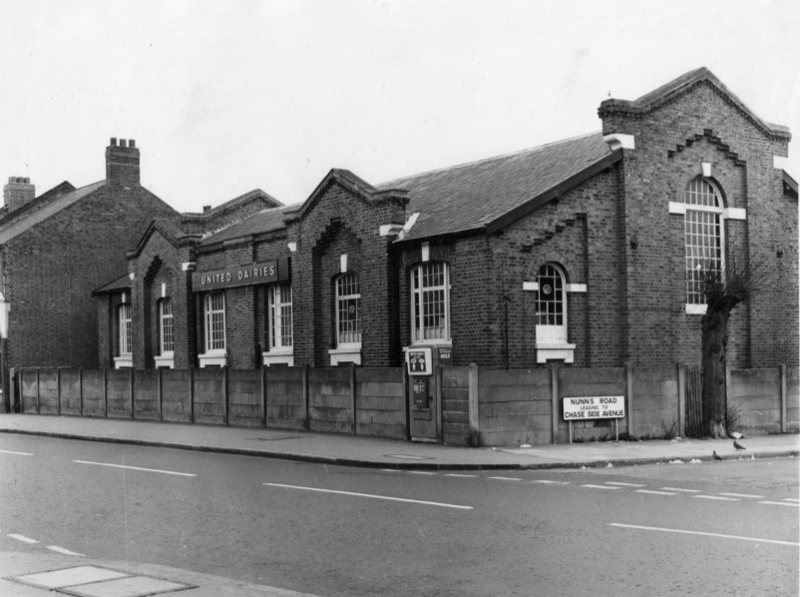
Chase Side Chapel (1791, rebuilt 1830) and Zion Chapel (1780) in the 1850s.
Ministers of Zion and Chase Side Chapels
In the days before cars many walked long distances to church, although the more wealthy would come by carriage and a horse drawn chaise was provided for the Minister. The first Minister, Mr Whitefoot, was ordained in 1781. His successor John Ryland had difficulty walking and one Sunday when his coach failed to appear and his servant was unable to catch his pony, the Minister ended up being pushed through Enfield Town to church in a wheel barrow.
In 1791 a proposal to appoint a Mr Chalmers caused a split in the congregation as some thought he was a bigamist! This was later discovered to be true, but not before Chase Side Chapel (otherwise known as The Independent Chapel, Chase Side) had been built on the adjoining site (where the car park is now). However following the discovery of structural problems Chase Side Chapel had to be rebuilt in 1830 at a cost of nearly £1,200. Until 1854 the two chapels had their own burial ground in front of Zion Chapel.


